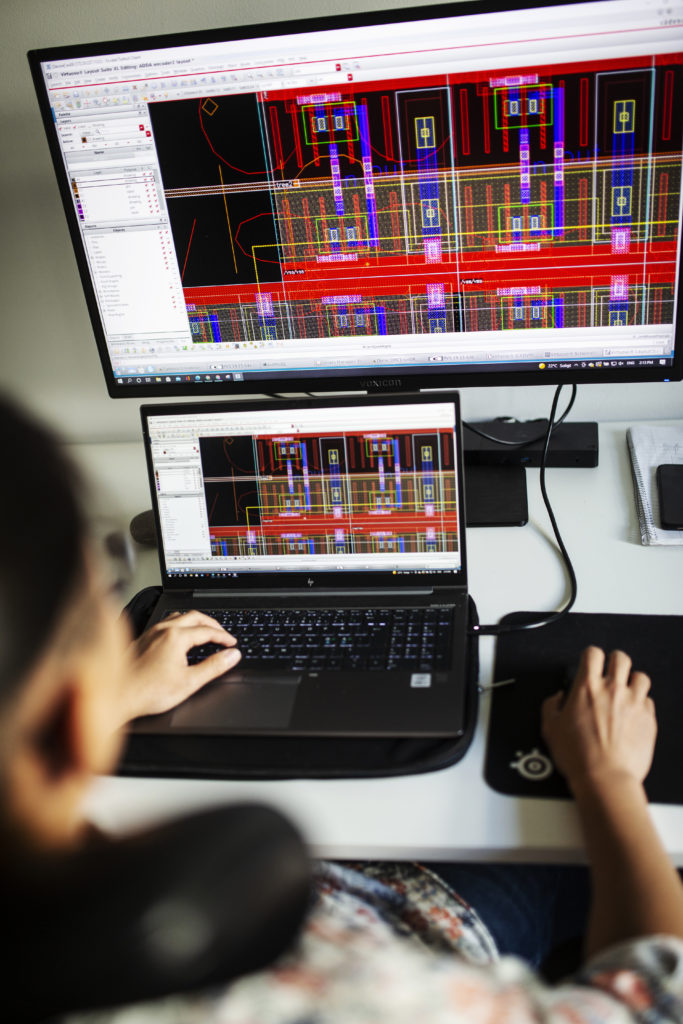We have in our previous posts shown the advantages with digital beamforming over analog beamforming from a performance point of view. Then one may ask; why hasn’t digital beamforming in mobile devices happened yet?
Well, if you ask people in the field, they will say that a digital approach has way to high power consumption due to the need of entire transceiver chain for all antennas whereas an analog approach only requires single transceiver chain due to that the beamforming is done in the analog domain at the front-end receiver using phase-shifters. Well, this might have been the truth in the past but let us check the case with the current state of the art technology.
Starting with the analog phase-shifters, which comprises switches and various physical routing of traces on the PCB used in order to make sure of coherent combining of the signal received or transmitted from the respective antenna. Passive phase shifters come with a loss of 8-10 dB to the already weak radio signal received by the antenna. That signal power loss needs to be compensated by a high gain Low Noise Amplifiers (LNA) on the receiver side and a high gain Power Amplifier (PA) design on the transmitter side. Such high gain high LNAs and PAs consume a significant part of the total power consumption in the radio receiver.
A digital beamforming architecture performs the combining in the digital domain and therefore the LNA and PA design can be more relaxed for digital architectures saving significant amounts of the power consumption.
Another important factor is that it is commonly believed that the analog-to digital and digital-to analog converters (ADC,DAC) need to be designed in the same way for both digital and analog beamforming, and since a digital beamforming requires an ADC/DAC pair for each antenna while the analog one only requires a single pair of ADC/DAC the power consumption must be N times larger for these components if N antennas is used. Furthermore, ADC/DAC has also in the past been a very power-hungry component and that (today erroneous) fact is still in many people’s mind in the field.
In fact, the power consumption for ADC/DACs especially when using 4-8 bits resolution, which is what is sufficient from a handheld device point of view, is nowadays, with evolving chip technology, on par with other radio components. Furthermore, which might at a first glance be a bit surprising, is that the number of bits needed for digital beamforming architectures can be reduced with 1 – 2 bits compared to an analog beamforming implementation due to the inherent converter quantization noise suppression made by combining the receiver streams after the ADC instead of before the converters as in the analog case! This relaxes the power consumption for the ADCs in digital beamforming solutions with 50-75% compared to the ADC needed for the analog solution!
By understanding and utilizing these facts together with a careful digital beamforming system design, BeammWave can deliver a sustainable and scalable digital beamforming solution with power consumption on par or better than current analog beamforming solutions for mobile devices! For further information please check out our white paper on The Power Efficient Architecture for 5G on mmWave Frequencies.
